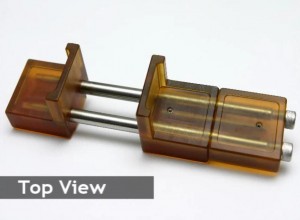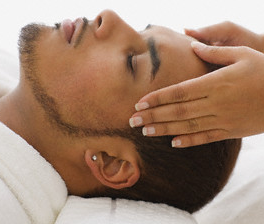Posts Tagged ‘complications’
Wednesday, December 9th, 2009
 Recently, Dr. Parsa Mohebi, Medical Director of US Hair Restoration Los Angeles, gave a lecture on a new way to use the Laxometer during mega and giga-session hair transplants at the annual ISHRS (International Society of Hair Restoration Surgery) gathering in Amsterdam, Netherlands. As mentioned in other hair transplant industry gatherings, the Laxometer has the ability to make more accurate the strip removal method during a follicular unit hair transplant and, at the same time, minimizing the risk of donor scar complications. Recently, Dr. Parsa Mohebi, Medical Director of US Hair Restoration Los Angeles, gave a lecture on a new way to use the Laxometer during mega and giga-session hair transplants at the annual ISHRS (International Society of Hair Restoration Surgery) gathering in Amsterdam, Netherlands. As mentioned in other hair transplant industry gatherings, the Laxometer has the ability to make more accurate the strip removal method during a follicular unit hair transplant and, at the same time, minimizing the risk of donor scar complications.
At the 2009 ISHRS Meeting, Dr. Mohebi discussed a new manner in which to utilize the Laxometer for patients who have limited laxity of the scalp because of previous hair transplant surgeries or for people needing a max number of grafts in one session (3000+, 4000+, 5000+, etc.). In 2008, Dr. Mohebi tried a different method by which he removed the strip in sequences for hair restoration procedures using the Laxometer before and after removal of every part of the strip. This particular way of using the Laxometer has resulted in a safer strip removal and, at the same time, has lessened the risk of donor wound complications.
The findings revealed at the ISHRS meeting proved that the Laxometer is the ideal surgical tool for increasing the number of hair grafts during a strip hair transplant while minimizing donor wound complications of a hair transplant surgery. Because of the results Dr. Mohebi found, he has been using the Laxometer at his California hair transplant offices quite often and it has resulted in a lot of satisfied patients.
Tags: complications, donor complications, giga session, gigasession hair transplant, hair loss and hair transplant devices, hair loss innovations, hair transplant complications, hair transplant donor scar, hair transplant donor wound, high grade baldness, International Society of Hair Restoration Surgery, ISHRS, laxometer, mega session, megasession hair transplant, men hair loss, scalp laxity
Posted in California hair transplant, hair transplant, men hair restoration | No Comments »
Thursday, November 19th, 2009

Q:
Not too long ago, I had a hair transplant (using FUE). Things were OK until several months after the transplant. I spent some time having fun in the sun, and it was maybe close to triple digit degrees outdoors. As soon as I got back to my house, I noticed my scalp in the transplanted area had turned white. It looked like the skin on my head had been scorched. But I didn’t think it was a big deal and I kept on using the Minoxidil with Betaderm spray, which my doctor highly recommended.
A few weeks later, the top of my head (which had been grafted) began to peel and the skin fell off (like a sun burn). And there were a few transplanted hairs which fell off as well, with the skin. This really alarmed me. After about eight weeks, the scalp seems to have healed, although there is some redness in places; but, overall, it seems to be OK. But, I’m a bit worried about the condition of my after-playing-in-the-sun scalp. I know it was probably a sun burn, but I just hope my grafts weren’t damaged beyond repair. I’ve done some research on skin consequences of sun burn, but I wonder if the grafts can ever fully recover from the exposure to the ultra-violet rays. I know if my skin becomes more tan, it’s OK. But about my grafts, I’m really concerned about them.
I need answers, doc.
Yours truly,
A beach bum with a hair transplant
A:
Hey beach bum,
Skin and scalp which has been exposed to the sun’s rays for long periods of time damage both native hairs and transplanted hair. The consequences can be especially harmful if a person who has had a hair transplanted is not under an umbrella or is not wearing a hat of some sort. The scalp skin could be damaged that way. It is best to stay out of the sun after a few minutes, at most. For the first six months, hair transplant patients may want to use sunscreen or wear a hat to prevent hair loss and to guard against permanent damage to hair follicles.
For those who don’t like to wear hats or other types of protective head wear ought to guard their hair as if their financial stability depended on it. Make sure your hair density increases to the point in which your hair follicles cover your entire scalp and so the scalp skin is not exposed to the sun’s scorching rays (especially during summer).
I can’t give you a verdict on whether your newly transplanted hair is permanently damaged. I’m sure I don’t have to tell you this, but I’ll say it anyway in case there are people reading this blog who are in a similar situation: from now on, be very careful about your scalp’s sun exposure. And just kick-back and wait a while to see if the damaged hair grows back.
Remember, after hair transplant care is very important, if not crucial to the longevity of your hair restoration results.
Tags: after hair transplant, complications, fue, hair loss, hair transplant surgery, men hair loss, sun exposure
Posted in Bakersfield hair transplant, California hair transplant, hair transplant, men hair restoration, Newport Beach hair transplant, Orange County hair transplant | No Comments »
Tuesday, September 15th, 2009

As with any surgical procedure, you would have to worry about certain side effects or tedious maintenance. We are asked by every potential surgical patient, “When can I go back to work after my hair transplant surgery?”
Downtime doesn’t only apply to the amount of time you would spend away from your office or how soon you can return. This all depends on the type of work that you do, whether or not you can use a hat, how sensitive the issue of your hair transplant is and whether or not you want to keep it a secret.
We have a few follow up dates after the hair transplant surgery in our California Hair Transplant Offices and each must be completed. On the day after surgery, all patients must have a hair wash done in office to best instruct the patient. We make sure to clean the patient as thoroughly as possible without damaging the hair grafts in a professional and comfortable manner. We make sure the patient understands that scabbing and redness must be dealt with as soon as possible.
Patients are most concerned about how they will look the first few days. Redness and swelling are the most common side effect of the surgery and can last 4-5 days after the surgery. Patients can choose to wear a hat to cover the transplanted area from plain site.
On larger hair transplant cases, the swelling may actually progress to the eyebrow area or even the eyelids and under eyes. 5 to 6 days is all it should take for this kind of swelling to go down, generally. The swelling is most always triggered by large (2500 graft surgery) or mega-session (3000+ graft surgery) procedures but is almost undetectable on smaller cases.
The final concern or issue after hair transplant surgery is the visual aspect of the existing hair. Most cases, we trim the hair in both the recipient and donor area (0.5 to 2cm) and it will stay at about that length for 2 to 3 weeks. In about 90% of patients that undergo surgery, the transplant hair will fall out within the first 3 weeks. This means will look like they did before hair transplant surgery. By this point, there should not be any swelling or redness. Staples and/ or sutures are removed in less than 2 weeks after surgery and the transplanted hair follicles will then go into their resting phase until they are ready to grow again.
Tags: after hair restoration surgery, after hair transplant, complications, hair transplant, hair transplant surgery, high grade baldness, Los Angeles Hair Transplant Center, low grade baldness, male patterned hairloss, men hair loss, redness after hair transplant, swelling after hair transplant, us hair restoration
Posted in California hair transplant, hair transplant | No Comments »
Tuesday, September 8th, 2009

We understand people like to pamper themselves. A patient of ours wrote to us regarding a scalp and body massage. He had his hair transplant surgery in our Encino Surgical Office almost 8 months ago and asked, “Would get a head massage risk loosening the implants?” He also wanted to know if that would help increase circulation to the grafts and improve growth.
Hair that has been transplanted over 3 months ago and is growing normally is considered permanent and cannot be dislodged from your scalp. The main concern is in the first weeks of a hair transplant surgery when the hair is still settling in. Even so, some cases where the hair is removed the active part of the follicle may still remain and a new follicle will grow shortly after. At this point, hair cannot be harmed.
However, there is no proof that a scalp massage to increase scalp circulation is proven to increase the quality of existing or newly transplanted hair. More so, it has also not been proven that lack of blood circulation or oxygenation in scalp will cause hair loss.
Tags: after hair transplant, complications, Encino hair transplant, hair loss treatment, hair transplant surgeon, hair transplant surgery, hair transplatation, male patterned hairloss, men hair loss, scalp massage, scalp massage after hair transplant, us hair restoration
Posted in Uncategorized | No Comments »
|
|
 Recently, Dr. Parsa Mohebi, Medical Director of US Hair Restoration Los Angeles, gave a lecture on a new way to use the Laxometer during mega and giga-session hair transplants at the annual ISHRS (International Society of Hair Restoration Surgery) gathering in Amsterdam, Netherlands. As mentioned in other hair transplant industry gatherings, the Laxometer has the ability to make more accurate the strip removal method during a follicular unit hair transplant and, at the same time, minimizing the risk of donor scar complications.
Recently, Dr. Parsa Mohebi, Medical Director of US Hair Restoration Los Angeles, gave a lecture on a new way to use the Laxometer during mega and giga-session hair transplants at the annual ISHRS (International Society of Hair Restoration Surgery) gathering in Amsterdam, Netherlands. As mentioned in other hair transplant industry gatherings, the Laxometer has the ability to make more accurate the strip removal method during a follicular unit hair transplant and, at the same time, minimizing the risk of donor scar complications.


